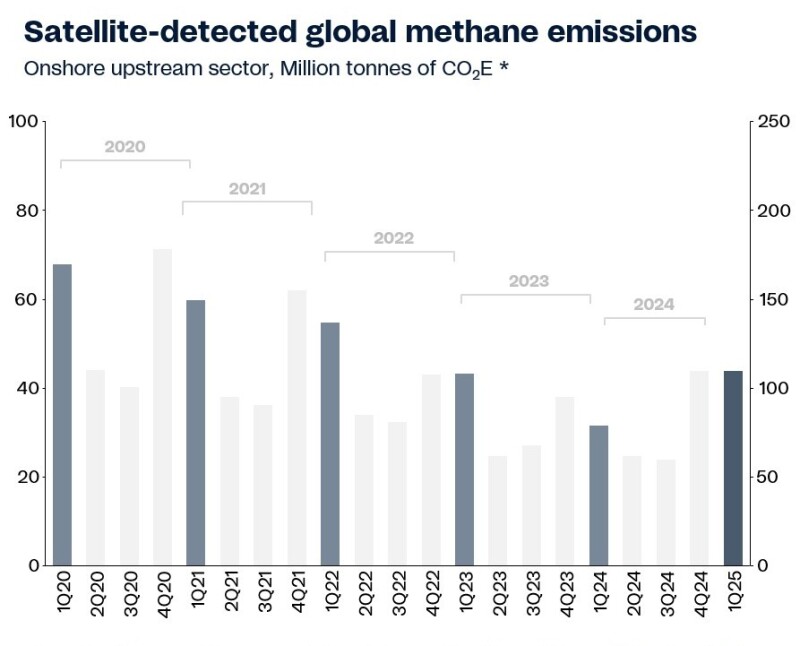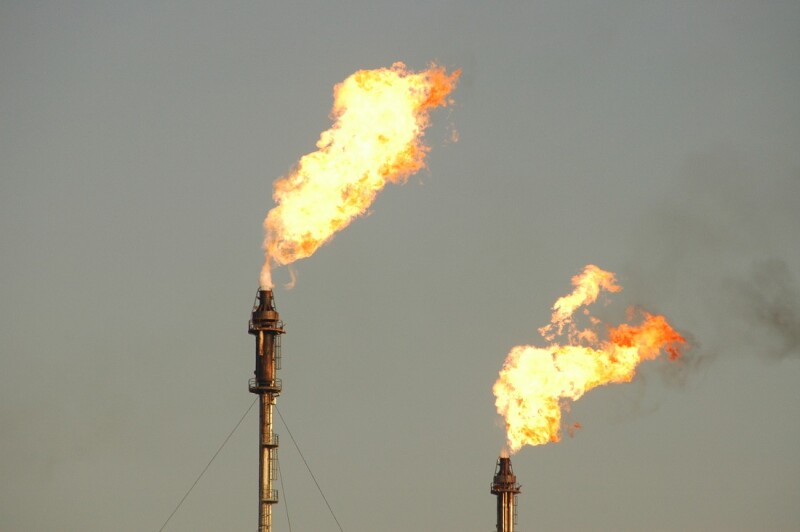Methane emissions from onshore oil and gas operations rose in late 2024 and through the first quarter of 2025, reversing several years of steady decline, according to new analysis from Rystad Energy.
Using satellite-based detection, Rystad found that emissions from onshore facilities in China increased by nearly one-third year over year. The US recorded a 4% uptick, while Russia saw a 5% decrease, which the report attributed to reduced upstream activity due to the ongoing war in Ukraine.
The consultancy noted on 27 October that the recent increases mark the first global rise in onshore upstream methane emissions since 2020.
Rystad said satellite data detected nearly 45,000 methane plumes during the first quarter of 2025, up from about 14,000 in the same period a year earlier. The findings represent an estimated 45 million metric tons of CO2 equivalent (CO2e) and a 40% year-over-year increase.

Most of the detected plumes originated from the world’s largest oil and gas production regions, including the Middle East, Russia, and North America. North Africa and China also ranked among the top sources, with Rystad attributing their disproportionately high methane footprint to aging infrastructure at processing facilities, compressor stations, and wellsites.
“Upstream oil and gas production is a major source of emissions, responsible for about 20% of all human-caused methane leaks into the atmosphere. The biggest challenge is detection but once found, most can be fixed, unlike CO2, which largely comes from combustion and is harder to avoid,” said Patrick King, vice president of emissions research for Rystad, in a statement.
King noted that methane’s brief life in the atmosphere but strong near-term warming potential makes rapid mitigation critical, adding that large methane leak events are rarely detailed in upstream company disclosures.
Rystad said methane emissions show clear seasonal patterns across most producing regions, reflecting operational factors but also detection factors such as weather that might impact satellite measurements.
In China, where emissions typically peak in early winter and decrease in summer, oil and gas output has climbed 50% since 2018 while satellite-detected emissions have dropped 30%. Rystad attributed the decline to recent efforts by state-owned producers to curb emissions.
The US shale sector was highlighted as an area to watch following policy reversals on methane regulation under the Trump administration and federal court rulings. Even so, Rystad expects shale operators to maintain existing programs that reduce emissions intensity and keep overall levels steady as production grows.
The report follows an August study from S&P Global that found methane emission intensity in the Permian Basin has fallen by more than half over the past 2 years.

